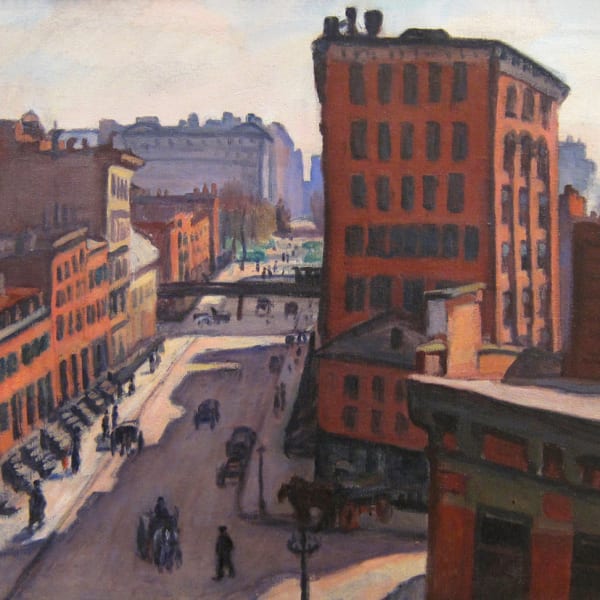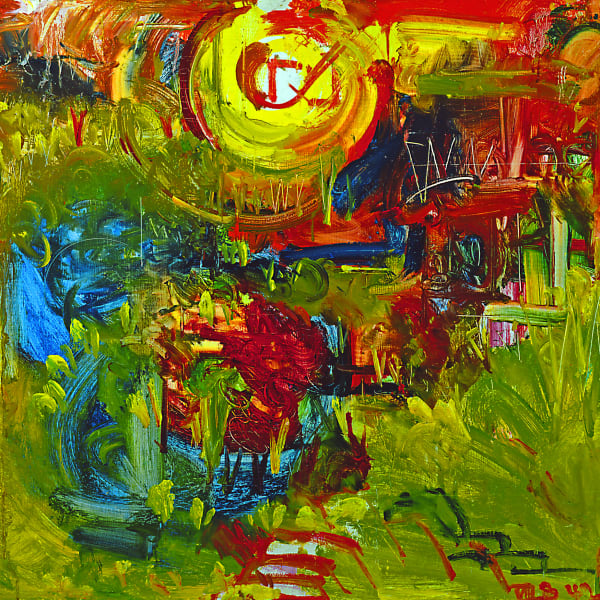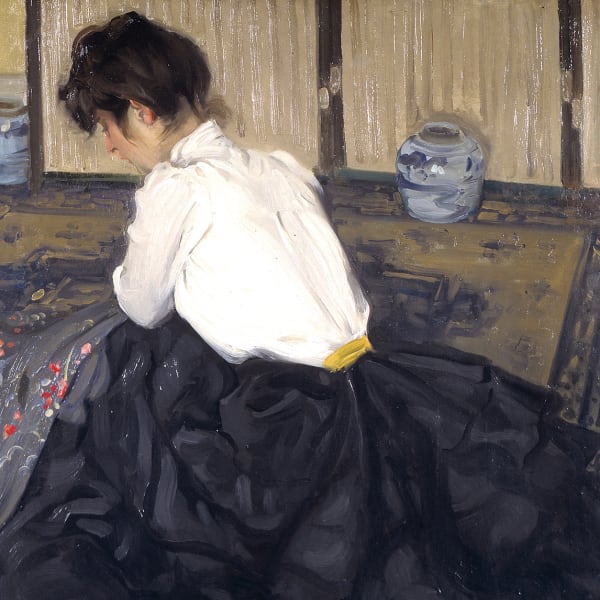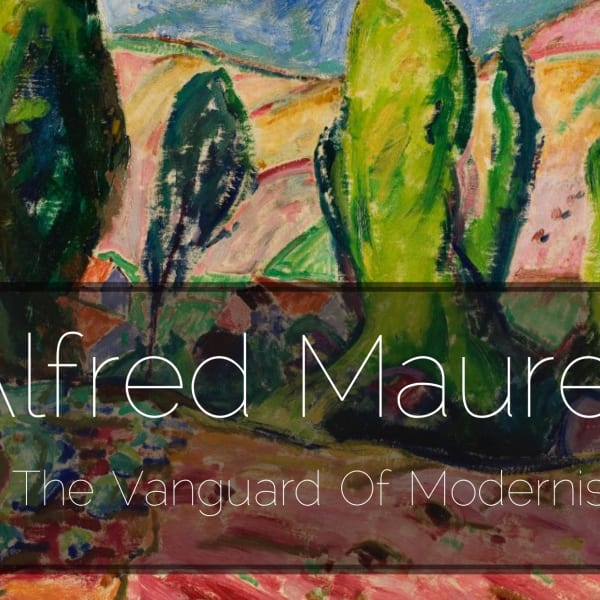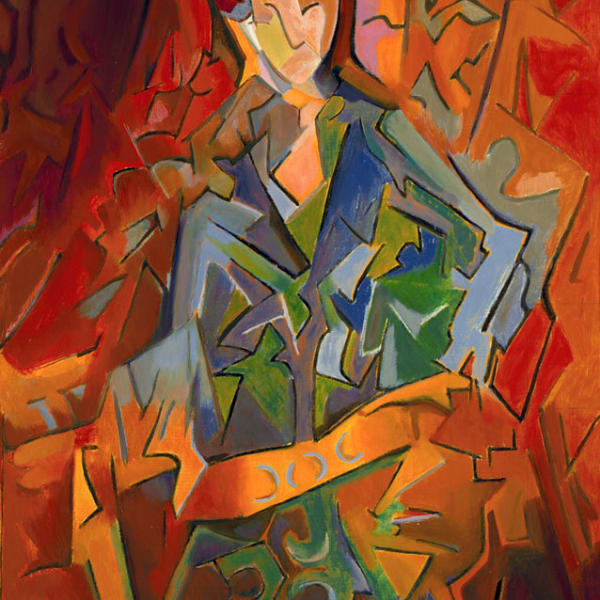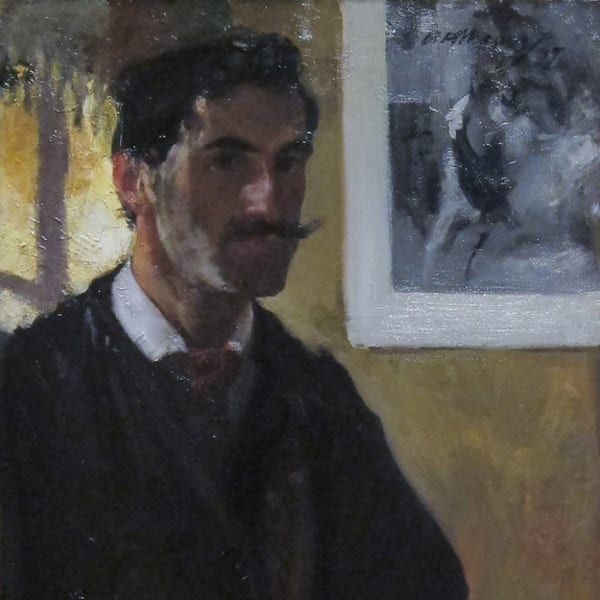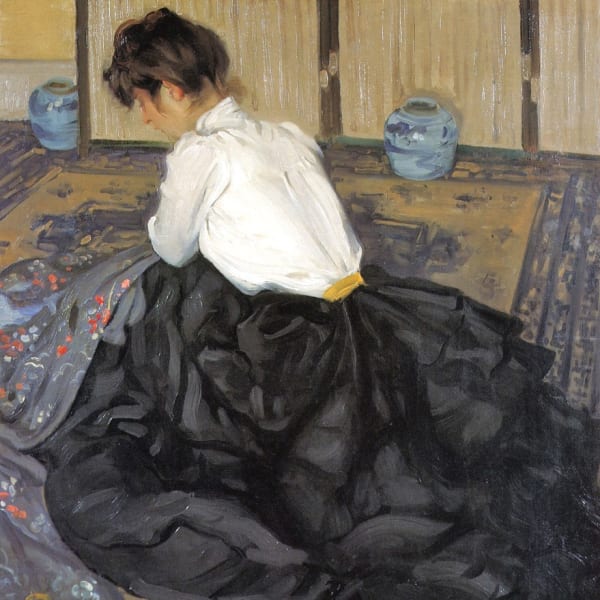
Maurer was creating striking new paintings executed with expressive brushwork and rendered with a concentration on an intensified palette of highly saturated colors.
Alfred H. Maurer was born on April 21, 1868, the son of the Currier & Ives artist, Louis Maurer. In 1884 he left school to work in the family lithographic enterprise of Maurer and Heppenheimer. One year later he enrolled at the National Academy of Design where he studied under Edgar Ward. He attended selected classes at the National Academy of Design beginning in 1885 and continuing through 1897. In 1897 Maurer sailed for France in search of the refinements afforded by Parisian art training. Shortly after arriving in the great “city of lights” he registered for classes at the Académie Julian, but attended classes there for only three weeks before striking out on his own. Maurer lived and worked in France from 1897-1901 and from 1902-1914.
Alfred H. Maurer was born on April 21, 1868, the son of the Currier & Ives artist, Louis Maurer. In 1884 he left school to work in the family lithographic enterprise of Maurer and Heppenheimer. One year later he enrolled at the National Academy of Design where he studied under Edgar Ward. He attended selected classes at the National Academy of Design beginning in 1885 and continuing through 1897. In 1897 Maurer sailed for France in search of the refinements afforded by Parisian art training. Shortly after arriving in the great “city of lights” he registered for classes at the Académie Julian, but attended classes there for only three weeks before striking out on his own. Maurer lived and worked in France from 1897-1901 and from 1902-1914.
Maurer officially launched his career in 1901 with fashionable Whistlerian and Chase-inspired, fin-de-siècle portraits, which garnered critical acclaim on both sides of the Atlantic. He simultaneously painted engaging genre scenes that chronicled the pulse of contemporary life at Parisian cafés, dance halls, and along the shore. By late 1906-07, however, Maurer had shifted his artistic direction and had committed to working in a Fauve aesthetic. He was creating striking new paintings executed with expressive brushwork and rendered with a concentration on an intensified palette of highly saturated colors. Maurer exhibited his Fauve landscapes, portraits and still lifes at important international exhibitions including the 1907 Salon d’Automne, where his colorful paintings could be seen in context with other similar works by leading Fauve artists.
In 1909 Maurer debuted his new Fauve paintings in a two-man exhibition with John Marin at Alfred Stieglitz’s New York gallery, “291.” American critics, reviewing this landmark exhibit, labeled Maurer’s Fauve pictures everything from “screams in primary colors” to “color notes of spiritual impressions.” One year later, in 1910, Maurer again exhibited at Stieglitz’s gallery in a group exhibition called “The Younger American Painters.” In 1913 he had an important showing of his work at the Folsom Galleries in New York and sent four paintings from France to New York for inclusion in the legendary 1913 Armory Show.
With the advent of World War I, Maurer was forced to leave France and return to the United States. After reestablishing himself in New York in 1914, Maurer sought to find support and recognition for his new modernist work. In 1916 he participated in the Forum exhibition held at Anderson Galleries and exhibited regularly with the New York based Society of Independent Artists. He was elected a director of this organization in 1919. In 1924 the dealer Erhard Weyhe offered Maurer sustained support for his artistic endeavors and bought the contents of the artist’s studio. He represented Maurer at his Lexington Avenue gallery and offered him exhibitions nearly every year until 1932.
In the 1920s and early 30s Maurer’s visual repertoire expanded to include a range of new modernist forms and structures. Throughout the twenties Maurer painted brilliantly colored landscapes depicting the wooded areas, winding creeks and rolling hills around the Shady Brook boarding house, where he stayed in Ulster County from April/May until November, nearly every year from 1916 until 1932. Around 1926 Maurer devoted a good deal of time to painting flower studies infused with a marked degree of spontaneity. These florals, executed in various media, including oils and gouache, were scripted in a kind of personal calligraphy.
During the 1920s Maurer became an important American pioneer of Cubist painting. He developed a highly personal and identifiable Cubist style. He devoted a great deal of time to working on Cubist still lifes and heads, which he rendered through highly innovative painting methods and techniques. Around 1927-28 after moving into a new studio space, he began working from the live model. Using the model as a focal point, he created figurative paintings and drawings that ranged from Cubist-oriented to Cézannesque, to those that were more whimsical in spirit. During the 1920s Maurer also became fixated on painting images of female figures, sometimes referred to as the “Two Sister” paintings. These figure-based compositions took a variety of forms. At times they were naturalistic and in other instances they were highly provocative abstract statements.
In Maurer’s last years, much of his work became decisively Expressionist in character. Figurative distortions took on pronounced importance in his art, as formal and emotive elements collided with amplified intensity. At times Maurer’s work seemed to echo a sort of personal angst, a troubling unrest that ultimately culminated in the artist’s tragic suicide in 1932.













